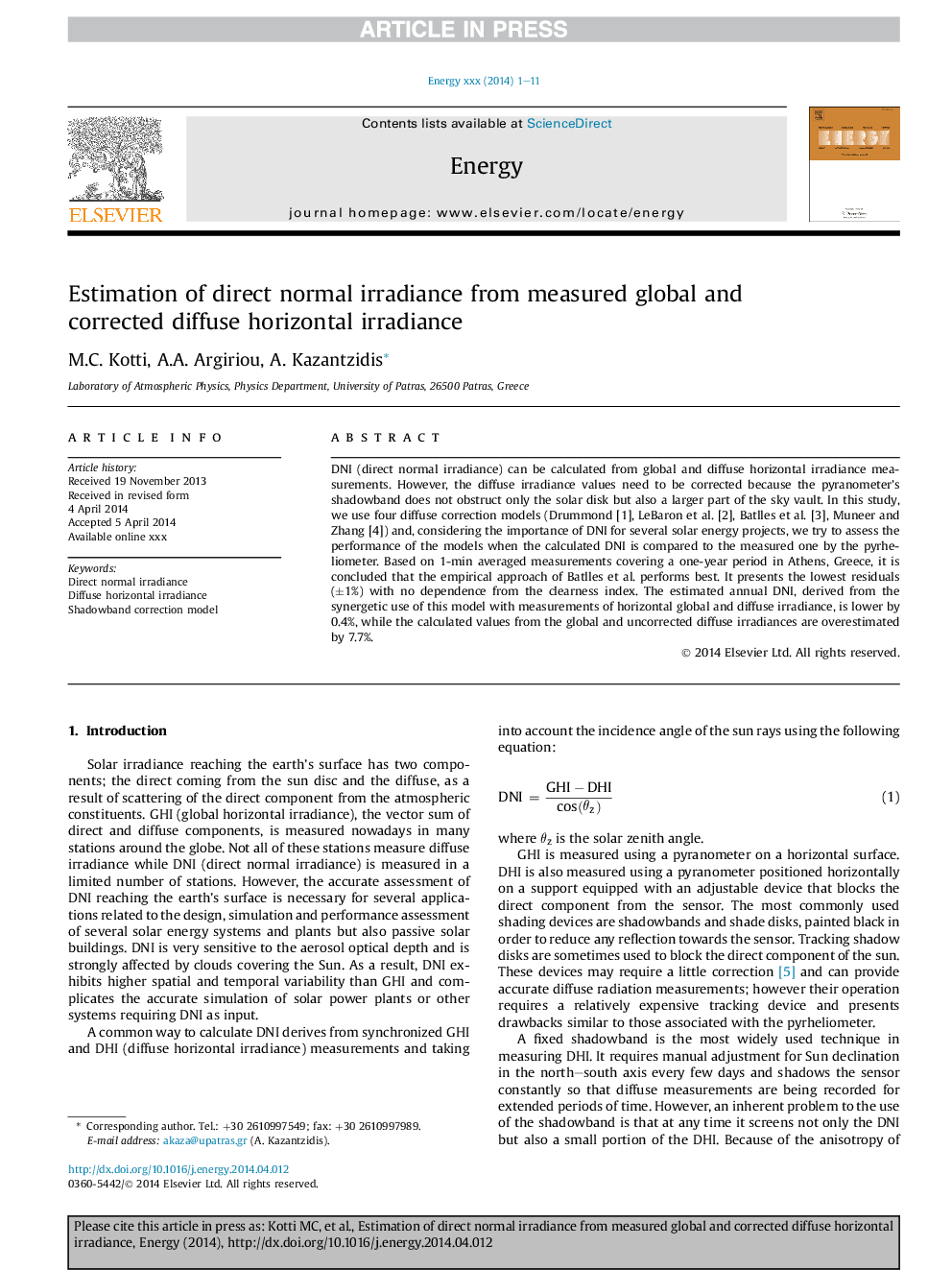| Article ID | Journal | Published Year | Pages | File Type |
|---|---|---|---|---|
| 8077665 | Energy | 2014 | 11 Pages |
Abstract
DNI (direct normal irradiance) can be calculated from global and diffuse horizontal irradiance measurements. However, the diffuse irradiance values need to be corrected because the pyranometer's shadowband does not obstruct only the solar disk but also a larger part of the sky vault. In this study, we use four diffuse correction models (Drummond [1], LeBaron et al. [2], Batlles et al. [3], Muneer and Zhang [4]) and, considering the importance of DNI for several solar energy projects, we try to assess the performance of the models when the calculated DNI is compared to the measured one by the pyrheliometer. Based on 1-min averaged measurements covering a one-year period in Athens, Greece, it is concluded that the empirical approach of Batlles et al. performs best. It presents the lowest residuals (±1%) with no dependence from the clearness index. The estimated annual DNI, derived from the synergetic use of this model with measurements of horizontal global and diffuse irradiance, is lower by 0.4%, while the calculated values from the global and uncorrected diffuse irradiances are overestimated by 7.7%.
Related Topics
Physical Sciences and Engineering
Energy
Energy (General)
Authors
M.C. Kotti, A.A. Argiriou, A. Kazantzidis,
